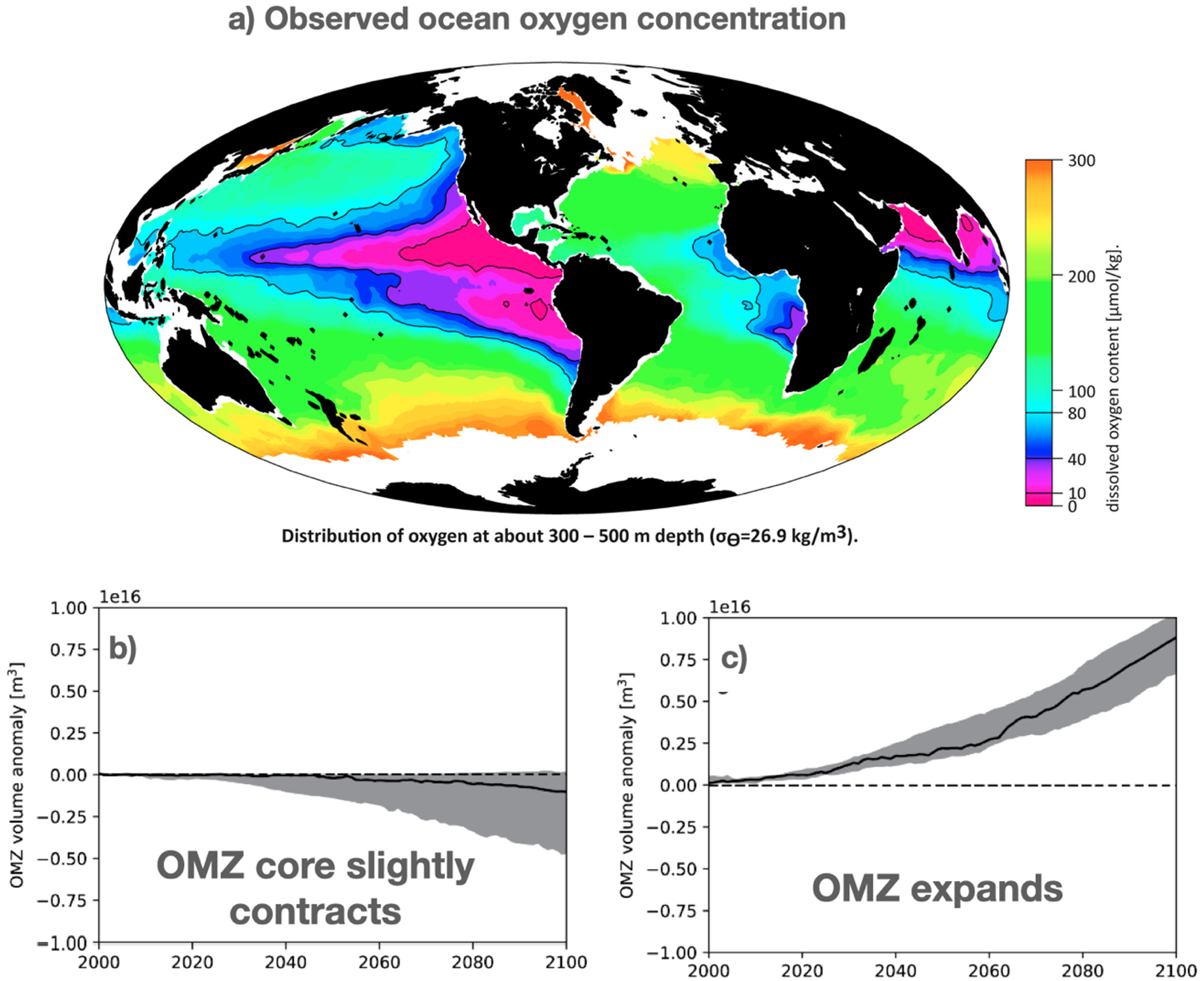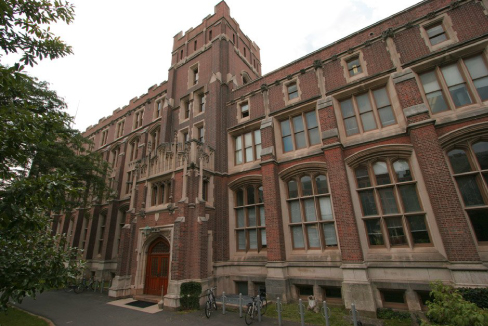Principal Investigator
At a Glance
Global warming and anthropogenic activities are contributing to a loss of oxygen in the world’s oceans. However, it is still unknown if this systematic deoxygenation will expand oxygen minimum zones (OMZs). These are areas where low oxygen levels threaten marine life and perturb the carbon and nitrogen cycles, potentially acting as an amplifying feedback on climate change. The Resplandy group uses the latest generation of climate model projections to evaluate how OMZs will evolve in the future, a key step to anticipate impacts on ecosystems, ecosystem services (e.g., fisheries), and greenhouse gas emissions. This work increases our understanding of an important oceanic impact of climate change that had many in the scientific community profoundly worried. It shows that, while serious, expanding oceanic dead zones do not represent the kind of tipping point that might significantly alter bp’s plans for the energy transition.
Research Highlight
The ocean has lost dissolved oxygen (O2 ) in response to global warming in the past 50 years (Schmidtko et al., 2017). A serious threat of this systematic ocean deoxygenation is the expansion of tropical oxygen minimum zones (OMZs) located in the subsurface ocean (Figure 12.1a), such as the already vast OMZ that is currently expanding over the tropical Pacific Ocean. Uncertainties in the spatial and temporal evolution of the OMZ severely restrict our ability to anticipate its ecological, climatic, and societal impacts (Resplandy 2018; Busecke et al., 2019). Low oxygenated OMZ waters (typically O2 <120 uM) delimit the optimum habitat of valuable commercial fishes, such as sardines and billfishes (Bertrand et al., 2011), while the core of the OMZ, where O2 concentrations are the lowest (typically O2 <20uM), will determine the rate of production of nitrous oxide, a potent greenhouse gas (Bianchi et al., 2018).
In this project, the Resplandy group leverages the latest generation of Earth System Models (CMIP6 ESMs) to examine the future evolution of the tropical Pacific OMZ and its core under the warming scenario SSP8-5.8 (“business as usual”)
For the first time, the researchers found a consistent response across models, which was lacking in prior work. ESMs project a robust expansion of low oxygenated waters (Figure 12.1c), but a slight contraction of the volume of the OMZ core waters (Figure 12.1b). While thermal changes lead to a relatively homogeneous oxygen loss (warming waters reduce oxygen solubility), the team found that non-thermal changes dictate the switch from core contraction to broader OMZ expansion. The OMZ expansion can be attributed to a slowing down of the tropical ocean circulation that supplies oxygen to the OMZ, while the core contraction is associated with both a change in ocean turbulent mixing and a decline in biological production and respiration (Busecke et al., 2022).

(a) Global map of oxygen distribution at 300-500m water depth in the world ocean (Source: GEOMAR). (b-c) Projected evolution of the tropical Pacific OMZ core (O2 < 20 uM) and OMZ (O2 < 120uM) in the newest Earth system model generation CMIP6 under the warming scenario SSP8-5.5 (multi-model median in solid, first, and third interquartile in shading).
If emissions are not curtailed, the expansion of the OMZ will yield a contraction of the habitat of numerous valuable marine species, confining them closer to the surface where oxygen levels are suitable for their metabolism, and making them more prone to overfishing. The slight contraction of the core, however, would likely have a limited impact on the production of nitrous oxide.
References
Bertrand, A., A. Chaigneau, S. Peraltilla, J. Ledesma, M. Graco, F. Monetti, and F.P. Chavez, 2011. Oxygen: A Fundamental Property Regulating Pelagic Ecosystem Structure in the Coastal Southeastern Tropical Pacific. PLoS ONE 6:e29558. (https://doi.org/10.1371/journal.pone.0029558).
Bianchi, D., T.S. Weber, R. Kiko, and C. Deutsch, 2018. Global niche of marine anaerobic metabolisms expanded by particle microenvironments. Nature Geoscience 11:263–268. (https:// doi.org/10.1038/s41561-018-0081-0).
Busecke, J.J.M., L. Resplandy, and J.P. Dunne, 2019. The Equatorial Undercurrent and the Oxygen Minimum Zone in the Pacific. Geophysical Research Letters 46:6716–6725. (https://doi.org/10.1029/2019GL082692).
Busecke, J.J.M., L. Resplandy, S. Ditkovsky, and J. John, 2022. Diverging fate of the tropical Pacific OMZ and its core under global warming. in rev. AGU Advances.
Resplandy, L., 2018. Will ocean zones with low oxygen levels expand or shrink? Nature 557:314–315. (https://doi.org/10.1038/ d41586-018-05034-y).
Schmidtko, S., L. Stramma, and M. Visbeck, 2017. Decline in global oceanic oxygen content during the past five decades. Nature 542:335–339. (https://doi.org/10.1038/nature21399).




